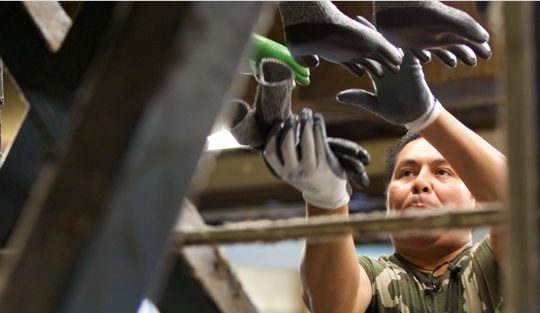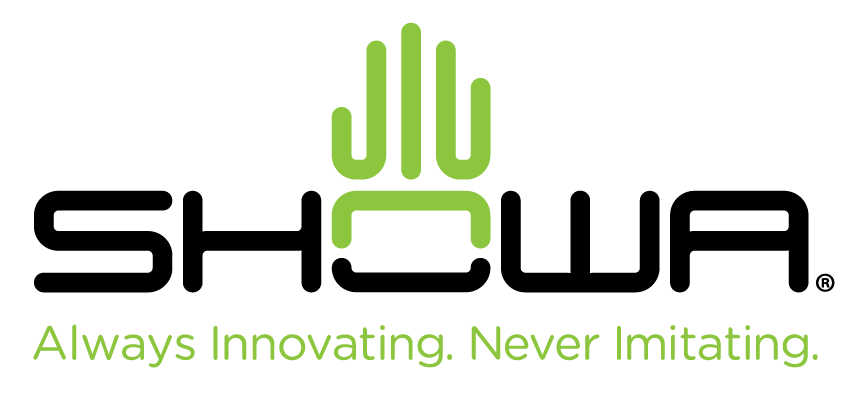- FIND GLOVES BY HAZARD
-
FIND GLOVES BY INDUSTRY
- Aerospace
- Agriculture
- Airports & Ports
- Automotive
- Chemical
- Clean room
- Commercial fishing
- Construction
- DIY
- Electronics
- Engineering
- Food
- Glass
- Healthcare
- Janitorial
- Laboratory
- Landscaping
- Manufacturing
- Mechanical
- Metallurgy
- Mining
- Municipal services
- Oil and gas
- Outdoor sports
- Packaging
- Pharmaceutical
- Printing
- Railways
- Utilities
- Warehousing & Distribution


As a protective glove manufacturer, it is our mission here at SHOWA to inform, educate and protect. We offer decades of expertise in hand protection, through research and innovation, to meet personal protective equipment (PPE) requirements of many industries globally.
By now, you’re likely to be aware of the developing situation with the monkeypox virus, which is a viral zoonosis (a virus transmitted to humans from animals) with symptoms very similar to those seen in the past in smallpox patients, although it is clinically less severe.
In this article, we’re going to review the critical differences between single-use nitrile gloves and vinyl gloves when it comes to protecting the user, and those in their close vicinity, against viruses like monkeypox that are transmitted between person-to-person and show on the body as pox-like scabs. We’ll also make an informed recommendation on which glove is most appropriate to use and also discuss the biodegradable qualities of each glove type.
What is Monkeypox?
Monkeypox is a virus that is transmitted from one person to another by close contact with lesions, body fluids, respiratory droplets and contaminated materials by skin or on bedding, for example. (Source). According to the World Health Organization (WHO); the “situation with monkeypox is evolving and WHO expects there will be more cases of monkeypox identified as surveillance expands in non-endemic countries.”
How Gloves Protect Against Viruses Like Monkeypox
To better understand the protective qualities of both types of gloves against viruses, we first need to look at how they are made. Let’s take a look at the makeup of vinyl gloves; due to the molecular structure of polymers, there are associated risks that limit their performance and affect barrier protection. Studies have highlighted the lack of cross-linking of PolyVinyl Chloride (PVC) molecules in vinyl gloves, causing them to separate when stretched.
You’ll see from the graphic depicted below, how nitrile is cross-linked between molecules whereas vinyl doesn’t share similar properties thus making it weaker and less puncture resistant being more susceptible to breaks and tears.
Vinyl Gloves Overview
Vinyl gloves are usually only used in specific low-risk environments like food handling and for short periods of time because they are more disposable and also are typically the most cost-effective when compared to nitrile gloves. The properties of vinyl gloves lend themselves to being more disposable as they don’t fit on the hands well and aren’t as comfortable or dexterous to wear for a long time. Due to the loose-fitting and disposability by design, it is not recommended to wear vinyl gloves when dealing with hazardous or harmful chemicals and where top levels of protection from viruses that pass via skin contact, like monkeypox, for example.
Features of Vinyl Gloves
- Naturally free from latex rubber
- Have a looser fit on the hands
- Are typically more cost-effective
- Generally have more anti-static properties
- Suitable for low-risk tasks like food handling
- Have a shelf-life of around two years
Drawbacks of Vinyl Gloves
There are certain ramifications associated with vinyl gloves when compared to nitrile gloves with regards to their protective properties against viruses like monkeypox.
Here are the three main drawbacks of using vinyl gloves:
- Poor Resistance To Stretch
Disposable vinyl gloves have poor resistance to stretch and elongation, based on lower tensile strength and elongation tests, than disposable nitrile gloves. - Poor Resistance To Chemicals
Due to their molecular structure, there are associated risks that limit their performance and affect barrier protection against hazardous or viral substances. - Less Elasticity & Flexibility
This leads to poorer fitting gloves with more holes occurring during routine use. Dangerously, these holes are often at the microscopic level and are unknown but pose a risk to the end-user. - Increased Permeability to Viruses.
This significantly increases the risk of cross-contamination for both the glove user and the products they are handling.
Nitrile Gloves Overview
Nitrile gloves are the common choice in high-risk environments because the monomers used in nitrile gloves allow for a higher level of resistance to hazards like oil-based chemicals, solvents and biohazards such as blood, viruses like monkeypox and other infectious substances. Nitrile gloves are also known for their strength and flexibility, making them more puncture-resistant in comparison to vinyl gloves.
Features of Nitrile Gloves
- Naturally free from latex rubber
- Have a tighter fit on the hands
- Are strong and puncture/tear-resistant
- Highly protective against viruses
- Are sensitive and have excellent dexterity
- Can be worn for long periods of time
- Have a long shelf-life of up to five years
Drawbacks of Nitrile Gloves
When looking at the drawbacks of nitrile gloves, with regards to their protection against viruses, there is just one potential drawback to choosing these types of gloves as your PPE of choice. When directly comparing nitrile gloves to vinyl gloves, feature-to-feature, it is simply their cost is typically higher than vinyl.
- Are typically more expensive per glove
Nitrile vs Vinyl Gloves: Failure Rate Comparison
It’s a well-known fact that gloves can fail during use in almost any setting, usually by puncture or tearing, but this does not happen at an equal rate between glove materials. Let’s see how the two gloves being reviewed fare under inspection.
Nitrile and vinyl gloves have been tested for failure after simulated use and studies have compared barrier integrity of new vinyl and nitrile gloves, with the gloves tested under conditions of activity in which they are normally used or manipulated to simulate actual use. The gloves were also subjected to water leak tests.
The findings from the study showed that nitrile gloves produced an average failure rate of just 4.6% in comparison to an alarming 10-fold increase in the average failure rate in vinyl gloves at 51.2%. Whilst nitrile gloves may cost more per unit, the longevity in use and higher protection are certainly worth the extra cost.
Which Gloves Protect Against Viruses Best?
Nitrile gloves provide superior protection from viruses
It is clear from this comparison that nitrile gloves provide superior protection against viruses like monkeypox when compared to vinyl gloves, and this corroborates with SHOWA’s recommendation as an experienced leader in protective glove manufacturing.
There are a number of reasons why single-use nitrile gloves fare better than vinyl gloves in high-risk situations involving hazardous substances but the fundamental difference is its molecular structure by design. Not only do the nitrile gloves fit better and are more dexterous for the user, but their strong and puncture-resistant makeup provides an effective barrier when handling chemicals or when having contact with patients who may be infected with a virus like monkeypox.
It’s important to note that SHOWA would not recommend using vinyl gloves for any interactions where there’s a risk of contracting viruses that pass from human-to-human.
Biodegradable Qualities of Nitrile & Vinyl Gloves
Now more than ever, the biodegradable qualities of gloves are critically important when choosing the material type to use, so here’s a brief comparison between the two, to help you make a conscious decision depending on environmental impact.
Vinyl Gloves
First things first, PVC (vinyl) gloves or PVC items in general, are not considered biodegradable; they are actually very resistant to biodegradation. A more suitable term for the breakdown of PVC materials would be degradation.
Degradation
Means breaking down into smaller pieces but the pieces still maintain the same chemical makeup of the original material. For PVC, this size reduction could take from several decades to a few centuries, depending on the thickness or mass of the PVC. The smallest particles attainable are still PVC!
Nitrile Gloves
Nitrile gloves have historically not been biodegradable but that changed when SHOWA introduced their revolutionary Eco-Best Technology (EBT) that uses organic additives and fibers with minimal impact on the environment.
Since EBT contains organic materials; when disposed of, microbes are attracted to it as a nutrient source. The microbes then consume, metabolize, and break it down into three natural compounds: organic soil, methane, and carbon dioxide. The nitrile glove material undergoes complete degradation within five years.
The SHOWA 6110PF and 6112PF nitrile single-use gloves have been tested to the ASTM D5511 and ASTM D5526 and ASTM E1963 standards. Once the gloves are biodegraded fully, there are no hazardous by-products left. The SHOWA 6110PF maintains the same claims and specifications as our standard nitrile gloves for five years after their manufacture dates. The biodegradation does not begin until the gloves are exposed to landfill conditions.
(Bio)degradation
Is degradation caused by biological activity leading to a significant change in the chemical structure of the exposed material and resulting in the production of mainly carbon dioxide, methane, water, mineral salts (mineralization) and new microbial cellular constituents (biomass).





